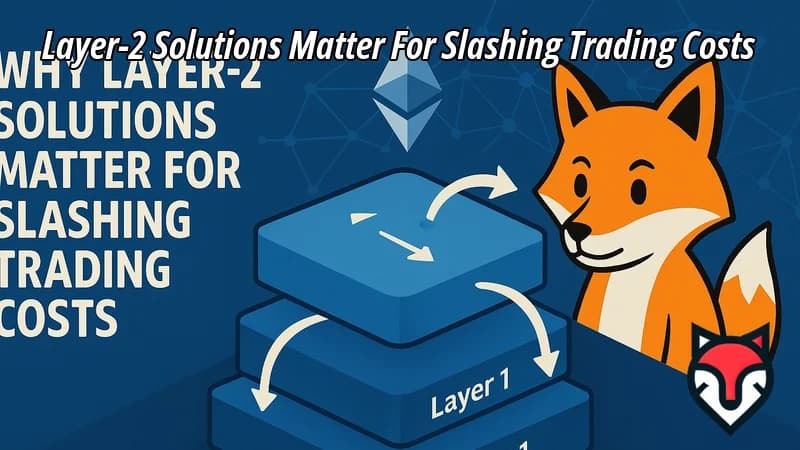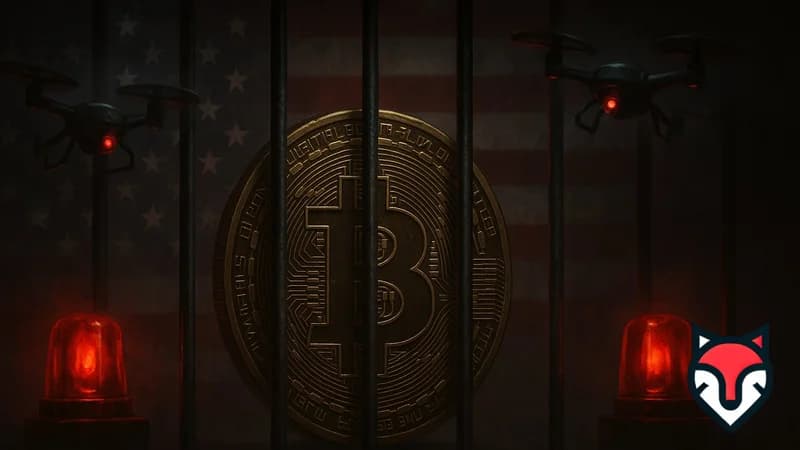Suggested
News
Last updated: Friday, April 11, 2025

Why Layer-2 Solutions Matter for Slashing Trading Costs in 2025
It’s April 10, 2025, and crypto trading is hotter than ever—but so are the costs. If you’ve swapped tokens on Ethereum’s mainnet, you’ve likely winced at gas fees that can turn a $10 trade into a $30 headache. Enter layer-2 solutions: the game-changer for traders in Hanoi, Saigon, or anywhere else. These off-chain scaling networks promise cheaper, faster trades without sacrificing security. In this deep dive, we’ll unpack why layer-2 crypto matters, how it slashes trading costs, and why it’s your key to thriving in 2025’s blockchain boom. Let’s explore.
Layer-2 Crypto: What’s the Big Deal?
Layer-2 solutions are scaling networks built atop blockchains like Ethereum—think of them as express lanes bypassing highway traffic. While layer-1 (mainnet) handles security, layer-2 processes transactions off-chain, bundling them into batches before settling on the blockchain. The result? Fees drop from dollars to cents. In 2025, with Ethereum’s mainnet still congested, layer-2 crypto like Arbitrum, Optimism, and Polygon are rewriting the cost equation for traders.
Picture this: you’re in Da Nang, trading a trending memecoin. On mainnet, gas hits 100 Gwei—$15 gone. On Arbitrum, it’s 0.5 Gwei—$0.20. That’s layer-2 magic: same trade, fraction of the cost. It’s not just tech—it’s your profit lifeline.
The Cost Problem Layer-2 Solves
Ethereum’s mainnet is a beast—secure, decentralized, but slow and pricey. In 2025, a busy day sees gas fees spike to 150 Gwei during NFT drops or DeFi rushes. A Saigon trader told me a $50 swap once cost him $40 in fees—insane. Layer-2 fixes this by offloading the grunt work. Rollups—zk-Rollups and Optimistic Rollups—compress hundreds of trades into one mainnet entry, slashing costs 10x or more.
Why’s this urgent? Trading volume’s soaring—DeFi’s a $2 trillion market, per CryptoStats. Without layer-2, small traders get priced out. A Hanoi NFT artist said mainnet fees killed her margins—layer-2 brought them back. It’s not a luxury; it’s survival.

Top Layer-2 Players in 2025
Layer-2 crypto isn’t one-size-fits-all—each network shines differently. Arbitrum One leads with speed, handling 40,000 trades per second at under $0.10 each. Optimism’s rollups keep fees near $0.15, perfect for DeFi swaps. Polygon’s been a staple, with near-zero costs and a thriving ecosystem—Vietnam’s Kyber Network even runs games on it. Then there’s zkSync, using zero-knowledge proofs for dirt-cheap, private trades.
A Bangkok trader swears by Polygon—last month, he flipped 10 tokens for $0.50 total in fees, vs. $50 on mainnet. Pick your layer-2 based on speed, cost, or dApps—tools like L2Fees.info show you the cheapest options live.
How Layer-2 Cuts Trading Costs
The math’s simple: layer-2 batches transactions. On mainnet, every swap’s a solo gas bill—say, 50 Gwei ($10). On layer-2, 100 swaps might share one $5 mainnet fee, dropping your cut to $0.05. Rollups amplify this—zk-Rollups crunch data tight, Optimistic ones assume trades are legit unless challenged. In 2025, Arbitrum’s average fee hovers at 0.3 Gwei—pennies—while mainnet’s stuck at 30 Gwei.
Real win: a Hanoi DeFi user moved $1,000 on Optimism for $0.12—mainnet would’ve been $25. Layer-2’s not just cheaper; it’s a scalpel for precision trading.
Trading Smarter with Layer-2
Layer-2 isn’t just about savings—it’s strategy. Low fees mean more trades—flip tokens daily without bleeding ETH. Batch moves: swap, stake, and lend in one go on Polygon for under $0.20. In Saigon, a trader uses Arbitrum to arbitrage DEXs—tiny fees make tiny profits stack up. NFT collectors in Manila mint on zkSync, dodging mainnet’s $20 hits.
Pro tip: bridge to layer-2 during off-peak hours (check Etherscan—2 AM UTC’s golden). One-time gas stings, but then you’re cruising. Layer-2 turns trading from a gamble into a science.
Layer-2’s Limits and Tradeoffs
It’s not perfect. Bridging to layer-2 costs a mainnet fee—$5 to $20—so it’s best for frequent traders. Liquidity’s thinner too; Uniswap’s biggest pools are still mainnet-bound. And while secure, layer-2 relies on layer-1—if Ethereum hiccups, so do they. A Da Nang dev noted Optimism’s 7-day withdrawal delay—fine for hodlers, not day traders.
Workaround? Hybrid play: use mainnet for high-stakes, layer-2 for volume. Tools like Hop Protocol speed up bridges—$2 and 5 minutes flat. Layer-2’s a tool, not a cure-all—wield it right.
The Future: Layer-2 Takes Over
Layer-2’s exploding in 2025—50% of Ethereum trades now off-mainnet, says Dune Analytics. Sharding’s full rollout by year-end could pair with layer-2 for near-free fees—think 0.1 Gwei averages. Big names agree: Vitalik Buterin calls rollups ‘Ethereum’s future.’ Even ASEAN projects—like Thailand’s digital baht—eye layer-2 for scale. Check CoinDesk or L2Beat.com—numbers don’t lie.
Rivals like Solana push zero-fee vibes, but layer-2’s Ethereum tie keeps it dominant. Trading costs won’t just drop—they’ll vanish for the savvy. Are you ready?
Why Layer-2 Matters to You
In 2025, layer-2 crypto isn’t a buzzword—it’s your wallet’s best friend. Whether you’re a Saigon DeFi pro, a Hanoi NFT flipper, or a casual trader in Jakarta, slashing trading costs means more profits, more plays. Search ‘layer-2 crypto trading’ or ‘cut Ethereum fees,’ and you’re here. It’s not tech—it’s power. So, how much will layer-2 save you today?
Suggested Articles
For You
Related Articles
- Dark Pool Trading: Hidden Transactions in the Crypto Market
- Mastering Ethereum Gas Fees: How to Track and Save on Trades in 2025
- How to Use Kraken Pro for Advanced Trading in 2025
- How to Hunt the MegaETH Airdrop: A Step-by-Step Guide for 2025
- SushiSwap (SUSHI) in 2025: The Uniswap Fork with Bold New Features
- Synthetix (SNX) in 2025: Synthetic Assets on Blockchain Redefining DeFi
- OpenSea in 2025: The Largest NFT Marketplace Still Thriving Without a Token












